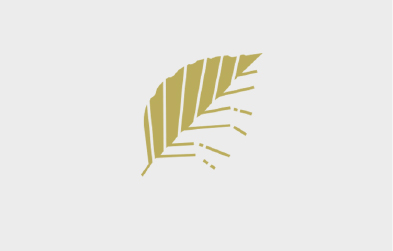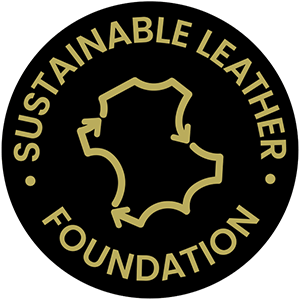Biodegradability

At the Sustainable Leather Foundation biodegradability falls under two of the domains of the ESG sustainability, planet and profit. The planet and people are the most affected by leathers that have high environmental, but the market also currently requires new products that fit into the circular economy, especially the bioeconomy.
The Foundation works collaboratively with chemical suppliers, health and safety officials, other certification bodies, value chain facilities and consumers to ensure that leathers made in the industry contain chemistry that assists biodegradability and the circular economy.
Biodegradable materials are often used in greenwashing where consumers get very disappointed by the materials that they place into the composters at home, only to find that the products don’t break down easily. Terminology difficulties, like the one just mentioned, and trying to get to the bottom of what makes the leather break down or not is the core of what SLF aims to achieve with its partners. The leather should break down and should not leave harmful residues in the soil.
A collaborative approach with the industry to allow producers to consistently produce leathers that contribute to the circular bioeconomy is key. Together with our value chain partners, the Foundation has worked with stakeholders to provide accountability of biodegradability terms in the Pathway Papers and in the Biodegradability Collaboration Hub.
Substances that are put on or into leather determine how easily the material will break down in its end-of-life stage. If a heavy plastic coating is used on a leather, the leather will usually break down leaving the coating behind. If substances used inside the leather have trouble being broken down by microbes then the whole material will struggle to disintegrate.
Biodegradable chemistry, which most regard as less harmful, is the present and future focus of the Foundation.
At the Sustainable Leather Foundation biodegradability falls under two of the domains of the ESG sustainability, planet and profit. The planet and people are the most affected by leathers that have high environmental, but the market also currently requires new products that fit into the circular economy, especially the bioeconomy.
The Foundation works collaboratively with chemical suppliers, health and safety officials, other certification bodies, value chain facilities and consumers to ensure that leathers made in the industry contain chemistry that assists biodegradability and the circular economy.
Biodegradable materials are often used in greenwashing where consumers get very disappointed by the materials that they place into the composters at home, only to find that the products don’t break down easily. Terminology difficulties, like the one just mentioned, and trying to get to the bottom of what makes the leather break down or not is the core of what SLF aims to achieve with its partners. The leather should break down and should not leave harmful residues in the soil.
A collaborative approach with the industry to allow producers to consistently produce leathers that contribute to the circular bioeconomy is key. Together with our value chain partners, the Foundation has worked with stakeholders to provide accountability of biodegradability terms in the Pathway Papers and in the Biodegradability Collaboration Hub.
Substances that are put on or into leather determine how easily the material will break down in its end-of-life stage. If a heavy plastic coating is used on a leather, the leather will usually break down leaving the coating behind. If substances used inside the leather have trouble being broken down by microbes then the whole material will struggle to disintegrate.
Biodegradable chemistry, which most regard as less harmful, is the present and future focus of the Foundation.
Get Involved
Get Involved
The SLF Collaboration Hubs and the Technical Focus Groups of the Advisory Board are the main platforms for stakeholder engagement with the industry partners. There is a great deal of modern, best practices with regard to chemistry already in the industry – but there is aspiration for more. Momentum is growing in the industry to ensure that even better chemical practices continue to evolve – with leather leading the way in many areas.
In the discussion forums mentioned above, the industry helps to identify the priorities, and through democratic, transparent negotiations, decides the solutions to those priorities (in a pre-competitive space). The Foundation helps partners to then implement the best practices into their facilities.
We have been producing independently peer reviewed papers since 2020 and work with industry experts to ensure that these leading ideas are found within the Foundation’s Audit Standard and supporting documents. The continuous engagement with the content shows a serious commitment to corporate responsibility and sustainability.
Biodegradability and the circular economy:
The SLF and industry attitude towards the due diligence on chemistry is aligned with the European Union’s Green Deal, the Farm to Fork Strategy, and Circular Economy Action Plan.
The Foundation provides biodegradability actions as follows:
- Collaborates and publishes knowledge on biodegradability and the circular economy
- Monitors global developments on biodegradability
- Informs the community on the best available information on biodegradability and the circular economy
- Discusses the pros and cons of leathers that break down easier in end-of-life
- Publishes benchmarks and standards on biodegradability could be measured
- Asks facilities to consider increasing their use of biodegradable chemistry.
The SLF Collaboration Hubs and the Technical Focus Groups of the Advisory Board are the main platforms for stakeholder engagement with the industry partners. There is a great deal of modern, best practices with regard to chemistry already in the industry – but there is aspiration for more. Momentum is growing in the industry to ensure that even better chemical practices continue to evolve – with leather leading the way in many areas.
In the discussion forums mentioned above, the industry helps to identify the priorities, and through democratic, transparent negotiations, decides the solutions to those priorities (in a pre-competitive space). The Foundation helps partners to then implement the best practices into their facilities.
We have been producing independently peer reviewed papers since 2020 and work with industry experts to ensure that these leading ideas are found within the Foundation’s Audit Standard and supporting documents. The continuous engagement with the content shows a serious commitment to corporate responsibility and sustainability.
Biodegradability and the circular economy:
The SLF and industry attitude towards the due diligence on chemistry is aligned with the European Union’s Green Deal, the Farm to Fork Strategy, and Circular Economy Action Plan.
The Foundation provides biodegradability actions as follows:
- Collaborates and publishes knowledge on biodegradability and the circular economy
- Monitors global developments on biodegradability
- Informs the community on the best available information on biodegradability and the circular economy
- Discusses the pros and cons of leathers that break down easier in end-of-life
- Publishes benchmarks and standards on biodegradability could be measured
- Asks facilities to consider increasing their use of biodegradable chemistry.
Biodegradability at a glance:

Biodegradability at a glance:
